Thank you! Your comment has been submitted successfully. You should be able to view your question/comment here within a few days.
Error submitting comment. Please try again momentarily.
- All Info
- Reviews (42)
- Q & A (0)
- Videos (2)
- Photos
Redline Trailer Bearings Races Seals Caps - 10-40
- Seals
- Grease Seals - Single Lip
- 2.510 Inch O.D.
- 1.938 Inch I.D.
- Redline
- 1 seal
| 1.938 | 2.510 | MHU Axles |
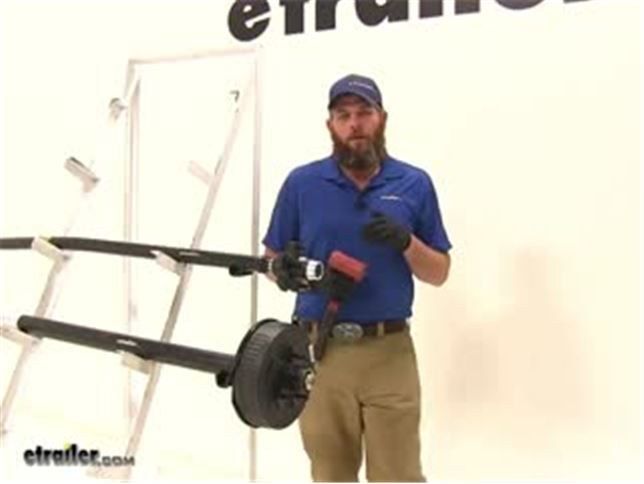

Videos are provided as a guide only. Refer to manufacturer installation instructions and specs for complete information.
Video Transcript for Trailer Bearings Races Seals and Caps Rebuild
Speaker 1: Today we're going to take you through the rebuild process on a couple of hubs. We've got an idler hub, and here we've got a hub and drum assembly. Works with electric rigs, but this can also work for just standard discs, if you've got a disc brake style setup.Basically what we're going to show you is how to get all of the bearings out. How to remove the seal. How to remove the race's if they're damaged, then get them replaced in the proper manner. We'll show you how to use an easy loop hub, which we have here.The first thing we are going to need to do is, get the grease cap off the end.
It can have either a rubber plug in it like this one does, or it can be a solid metal cap.These are pressed fit in there, basically by tapping on them on the back side. To remove them, a deadbolt hammer is typically what we're going to use. We're just going to start tapping as we go around. You'll see a little separation start right here, and slowly it'll work it's way off.Now the next step's going to vary a little bit depending on your axle setup. Do you see this is going to have a keeper that goes around the nut.
And that prevents that from being backed off, or removed. A lot of times you'll have a castle nut, which will have just little tabs that stick off, and there will be a cotter pin that passes through it. Just depending on your application, you need to get the keeper for the nut off. This style we just kind of pry out. A cotter pin you would just remove of course.Once we have that off ...
We'll start to take off the nut here, and the washer that's in behind it. Now yours should look a whole lot more dirty than this. There should be a lot of grease packed in, and through the hub, this one's brand new. We thought it'd be nice to show you the components before the grease was on .. Of our washer that comes off.And then here we're going to have our outer bearing.
Continue to pull that. We're gonig to have our inner bearing here. That sits in the backside of the hub. And we didn't put it in yet, we will show you how to put it in. But a seal would typically be covering the backside here. We'll show you how to use a seal removal tool, or another tool. To get that pried up and out. To get an access to that inner bearing.Now for a drum style like this, that process for disassembly is going to be just the same. One thing to keep in mind if you're using a disc brake setup. You'll have to remove the caliper before the disc is going to come off.Now once we have the spindle exposed, as we said this is going to be really greasy. We want to get all the grease removed, and the first thing we'll do is inspect it. We want to make sure that it looks just like what we have here. Everything's nice and smooth. We don't see any kind of discoloration, or any marring on the metal. Indicating that our bearing's got hot.If you do have any of those symptoms, at this point it's time to replace those bearings. You don't want to repack them. Get new bearings, and put in there. You might have a bearing that's come apart in here. Another surface to ensure is in good condition, is where your seal is going to go. That helps seal all the grease inside of our hub. With a damaged or broken seal, that grease is going to seep out. Either out of the hub, or in this case into our brake assembly.Now if your axle has brakes, we're also going to check the disc. Make sure it doesn't have any issues, or your hub. And this is going to be a hub and drum assembly. The brakes are going to ride on this machine surface. You're going to check that for signs of excessive heat, discoloration, or cracking. And this is our magnet surface. We'll check that surface for the same issues.Now inside the hub regardless if it's a disc brake, it's a drum brake like this. Or just a standard idler style hub. You're going to have an outer race. Would be right here, it's a small tapered piece of metal your bearing sits in, and rotates on. That's basically the outer portion of the bearing.You have the same thing here on the backside. This is called the inner race. Now if those show any signs of wear, overheating, or cracking. Those are also something we'll need to replace, which we'll show you how to do in just a minute.Now, with your brake assembly exposed, if you do have electric brakes like we have here. It's a good idea to check all the components for wear, cracking, maybe missing pieces. Check your pad thickness to make sure those are in good shape. Basically if you have a non working brake assembly and you put everything back together, you're just going to have to take it apart and do it all over again to get back to the brake assembly. This gives you a really good option to be able to change them out.And most applications are going to use a four, or maybe a five bolt flange to hold them in place. And you'll just remove the lock nuts, or sometimes you'll have a hex nut with a lock washer. You want to remove those, and then simply slide your assembly off after you cut the wiring.The friction material itself should also be checked for any kinds of cracking, or overheating. If you have any grease inside the system at all, it's likely it's gotten on those pads. It's a good idea to get those changed. Now as far as the removal of the races go, it's going to be just the same whether we're using an idler style hub like we have here. A drum brake like we have here. You can basically see where the idler is, here in the middle of the hub. It's going to go all the way around there, and we just have this extra material here to provide our braking surface.Now if you're doing a disc brake style job again, it's going to be just the same here with the races living inside of the actual hub portion. You'll just have the discs there for the brakes to make contact. We're going to use this little bit smaller one, it's a little bit easier to manage to show you how to get these out. We've talked about where the races are. The outer here, the inner being closer to the inside, but on the backside of the race there's a little lip. That lip's meant to stick out just a little bit further than the hub, and provide us an area to put our tool on, and help to drive that out.If you look all the way through there on that inner race, you'll see that little lip that sticks out just from the hub slightly, and it gives us enough area to use our tool on. Now generally to remove these you're going to use a punch, similar to this. Some guys will use a screwdriver. Or a piece of pipe. If you have a piece of pipe that's small enough to fit inside of that diameter, you can take that down through and allow it to rest on that lip.Use our punch, and then just need a hammer. And we'll start working that out. We're going to tap all the way around. Kind of equally, and evenly apply the force to get it to come on out of the bottom for us.You can see now as it starts to come out there's going to be a little gap created between the hub and the race. And we can just keep going, bringing it on out. Then you can inspect the inside of the hub surface there. Make sure no damage or anything has occurred, and repeat that same process for the outer race if you plan on removing and replacing that one.Now in the outer flat edge, you can see we're going to have our tapered edge on this side. If we roll our race over to the flat side, typically there's going to be a manufacturers part number on there. That will help you identify which race it is, that you need to go back in your system. If those are rubbed off, worn off, if you can't read them. You can measure the outside, to outside diameter of the race here. It's a good idea to use a micrometer to get it exact.Now here's your basic micrometer. And again, the outside of the race is what we're going to need to measure. You want to go . I set the thickest point there. Looks like this one's going to be about 1.98. That's going to be the measurement you'll want to supply.Now while we've got this out, let's also look at the proper way to measure our bearing. Instead of the outside for the bearing, we need to measure the inside diameter. That's going to be pretty simple. Let's pull that out, find the largest measurement we can. Which here, looks like it's going to be 1.03. With that information, we'll be able to get the correct bearing, and the correct race, so they'll fit together properly and make a full bearing kit for us.Now here's the race, we're going to show you how to get this put back in. Basically just going to press fit inside of our hubs. We need to get it down on there. Kind of like that. And you'll have a couple options. A lot of times you're going to see do it yourself or at homer, just going to use a wooden block. Just place it on there. That's going to get you started, but at that point you'll struggle in getting it to go all the way down into it's seat.Now to take care of that problem, there are several seal drivers that are available. Seal and race drivers that are available out there on the market. It's designed to fit down inside of our race, inside of our hub and get it down there where it needs to go. This is part number ptw83020, has several different sizes, even if you have multiple trailers it's going to do the job.Now the side with the angle on it, is designed to fit down inside of our race. If we use the other side, that's going to be for driving your seal into place. Just want to hold it, and take it on in with your hammer. You'll see, you just want to insure that our race is all the way up against that line on the hub where it's supposed to mate to.Now when it comes time to pack your bearings you're going to have several different ways of doing this. You can just use your hand, is the traditional method. That's going to be the method probably reserved for the very occasional trailer work kind of situation. If you do it once or twice a year, probably get away with it that way.Next you would go to a, kind of a sandwich funnel style almost. If you look inside of there, you can see the bearing. It's located between the two pieces. Just use a grease gun. Start filling that with grease, and that's going to fill our bearing for us. And the third, with this one you're just going to place your bearing down and in. It should be pretty close to center. And then we've got our cone her that's going to go down and secure that.Now I think this style, wastes a little bit more grease than what this style will. This has a dust cap. You can see, you can keep your grease in there, put your dust cap on there and save it for later use. This will be if your going to do it every couple years. And this particular style would be if you're a more regular user.Let's start by showing you how to use a bearing packer. Similar to this. Again, we've just got our grease inaudible 00:11:07 here on the top. And then just slowly start to fill it. Now I like this style quite a bit. I think even regular users might enjoy it, because you can get a really quick visual look at that bearing. You're not going to have to overdo it, or have to much grease.You can kind of see in there now, we're starting to get grease to come out of it. Couple more pumps, we'll be good. You can see we've got grease coming out all the way around. Where all of our bearings are. Got a little bit of excess there. Just take that around the outside of it. And then we should be able to lift it off. And now you can see what we we're talking about. Just a little bit of excess there, that you're just going to wind up wasting.Now we'll take our bearing, we're going to place it right down in our race. And then we'll cap off the back with our seal. Right now our seal's going to fit in just like our race did. It's going to have a little bit of a pressure fit to it. Now very often in this situation, I see people using the four by four method. Kind of here, just placing that on and tapping it. As an option though, if you do have one of these. You can see that's designed to fit right on the top of the seal. And help drive it in.The biggest thing here is, just going to be getting it driven in squarely. You can see, this side's in a little bit further than this side. I'm going to start this side first. Now since we didn't have the opportunity to show you before, we're going to take a look at pulling a seal. Now this is a seal puller, we carry this on our website part number ptw1219. This is meant to hook underneath the seal. And then you kind of pull up on it, and just like our race you'll have to work all the way around that edge. Just bringing it out a little at a time.If you don't have that available. Another option would be a screwdriver. You just kind of get that under the seal, and turn it. And see, that'll allow you to also pop that out. We've taken care of our race. Our inner bearing. Our seal. The last component, before we put our hub back in place is going to be our outer bearing. Now with this bearing, I'll show you the hand packing method.This is definitely . Slightly dirtier method than the bearing packer. When we get grease on our hand we want to look at the larger side of the bearing. This is the smaller side. We have a larger side In between the inside and outside there's a gap. We can see our rollers in there. We want to grab that, and use that gap and shove grease inside of it. Now this is going to take a little bit, you want to work in the same spot until you get the grease pushed all the way through. We can see on the top there we've got a little bit starting to come through.And once we push it in the bottom, and you see it start coming out the of the top in those little drips, it's going to indicate that, that section's fully packed. Just need to work all the way around their outside edge now and do the same thing. Alright, once that's all the way around . The bearing will be ready for use.Now one more thing I like to do. We can see our inner bearing there, and our outer bearing. Well between the two, got a pretty big gap in there. If you'll take a . Pretty good amount of grease. We're just going to go all the way around. See how we can go all the way around the inside and just line that really well. The more grease we have in here, the less chance we have of any moisture getting in there, which can cause corrosion, rust, pitting. Pretty much things we do not like when it comes to bearings, races, and hubs.Put plenty of grease in there. And then this one does have the easy lube spindle, that'll even fill it in more. Now we can get our assembly slid on. I like to keep my thumbs on that outer bearing, just to prevent it from . inaudible 00:15:28 pushed off there. Now we can put on the original hardware that we removed, in taking off our hub the first time. In our case, we had our washer and our nut.Now most commonly you'll see pliers similar to this being used. We basically want to get that tightened down. Once it's fully tightened down you'll feel some resistance in the hub. We back it off just slightly. That'll give us a little bit more freedom of motion there. Something you don't want however . Is any movement in, or out on your hub. You want to be sure that everything is compressed, and you don't have what's called end play. Which would be the play in and out.Once we've got that set, then you'll put on whatever tight keeper yours came with. Get that put back in place. Now with an easy lube style hub, you're going to place your grease gun on the end, and then you can just fill the remainder of that hub up.Now for your typical applications, you're either going to have a solid cap, or a cap that'll have a rubber plug in it. A solid cap's going to be for an axle without the grease inaudible 00:16:51 here on the end. Goes on there. Just knock it on with your rubber mallet. Same with the one with the plug. Just gives you a removable area there, be able to cap that off.We'll show you how to put that on. Now as alternatives as well, a lot of times on boat trailers and marine kind of situations. You'll see a bearing buddy. This is going to apply a little bit of pressure on the grease, you'll fill it up. This kind of comes out just a little bit. That applies constant pressure on the grease to make sure we don't have any air, or anything like that. Then there is also an oil bath hub available. Now this is going to be for use with seals that are going to be designed specifically for oil bath use. You'll have to change that seal.We're using a double lip seal. There are also single lip seals available. Of course a double lip seal is going to give you just a little additional security. Keep that in mind when you order. But let's get this knocked on there now so you can see how that works. We just want to take the cap, we're going to center it. This is going to be very similar to what we did with the seal. And then just gently start tapping it around the outside. And it'll seep down on there for you.It's really going to be the same thing that you'll do with any of the end caps. Now with this side done, it's a good idea to take care of all the other hubs. Get them all on the same maintenance schedule. And as long as you'll periodically check the grease, take your trailer out for a trip occasionally. Just to keep everything lubricated. It should extend the life of these parts, and give us years of good service.
Customer Satisfaction Score:
99% were satisfied with this product
1% of customers were not satisfied
- Wrong item was ordered
Customer Reviews
Grease Seal - 10-40
Average Customer Rating: 4.9 out of 5 stars (42 Customer Reviews)
worked perfectly
A simple bearing pack on an early 50's travel trailer axle turned nightmare. My local guys just said sorry. However, etrailer had the parts in stock at a great price. The site is very user friendly. What made finding the right parts easy was their excellent and complete listing of sizes and dimentions of seals, bearings and hub caps etc. that I needed. I found the parts to be of high quality. This combined with unprecedented customer service and fast shipping has earned them my future business. I would highly recomend them as a go to site for all your trailer needs. THANKS.
Very easy to identify and order. I am rebuilding my 10.000 Lb. trailer brakes and axles, Your grease seal is very good quality, This made it easy to install. Prompt service and delivery worked well for me. Thank you and I will be using your company as often as possible. Also I called about delivery and the person who I spoke to was extremely helpful.
Seals came as promised. etrailer is very reactive to any questions or concerns you may have. Staff is knowledgeable and informative
The grease seals were of good quality and fit perfect. I had to remove the old seals to inspect the bearings, so needed replacements. I tried to get them locally but could not. Thanks for stocking these.
One of the reasons I ordered from etrailer was the excellent reviews from customers. I initially shopped around locally, but the parts houses hear me did not have the items I needed. It was extremely easy to locate all the parts I needed from your website. Ordering was easy, shipping was fast, and all the parts fit correctly the first time! Thanks for great products and service.
Very fast shipping.
Brake assemblies and seals were received on time and as described on your website. Items fit perfectly as intended.
Second or third time ordering from etrailer this year. Every product has been as described, shipping charges were reasonable and items always shipped very promptly.
Just what I needed... They even threw in an extra bearing grease seal!

I used this to replace a seal on my Hudson HBC10 equipment trailer. It fit perfectly. No issues as of one year later.
These 10-40 seals are much better than the original plastics seals. So far, so good.
Fantastic. Don't bother even looking anywhere else for trailer parts, nobody can touch their pricing.
This was an exact replacement for an original plastic seal that was no longer available. Very happy with the fit and quality
appears to be good quality. Didn't fit my application due to my error, and not worth sending it back due to expense.
Bearings, races, seals, all worked great.
Will buy from here agian..
Works! Fits - very pleased
Perfect fit.

Bushing was a perfect fit and is performing great on my axles.
OEM fit and finish. Used these to replace the leeky seals and looks good so far.
The item was shipped quickly and fit perfectly! Thank you!
Quick Shipment, Correct Quality Parts, Excellent Price, What else could you ask for?
Good quality seals, no issues.
Product is installed and fit excellent.
Fit perfect; low price.
See what our Experts say about this Redline Trailer Bearings Races Seals Caps
- Availability of Replacement Grease Seal with 1.938 Inner Diameter and 2.523 Outer DiameterThe closest grease seal we have available to the dimensions you provided is the Redline # 10-40. This seal features the same 1.938 inner diameter but a slightly smaller 2.510 outer diameter. This may work as a replacement on your hubs but we do not currently have the 10-41 grease seal available.
view full answer... - Dexter Hub 8-248 Bearing and Seal Replacement RecomendationsI am surprised you have a # 10-40 hub seal. The Trailer Hub and Drum Assembly # 8-247-50UC3 that you said you have would take a part # 58846 seal or # RG06-020. And then for bearing part # L68149 for the inner bearing, part # L44649 as outer bearing. For races part # L68111 for inner, and # L44610 for outer. If you do have different bearings than what I listed you don't have to order the bearings all as a kit. You could piece together all the parts you need by ordering them individually.
view full answer... - Is a 10-40 and 10-19 Grease Seal Interchangeable The part # 10-40 is a single lip grease seal with a 1.938" inner and 2.510" outer diameter. The part # RG06-050 is a double lip grease seal with a 1.719" inner and 2.565" outer diameter. They are not the same and will not work in place of one another regardless of whether or not you have EZ lube spindles. In order to determine the correct size grease seal your trailer uses you would need to pull off the hubs and measure the grease seal seat on the spindle with a digital caliper like part...
view full answer... - Upgrading Dexter 8-222 Trailer HubsThe Dexter 8-222 was used on a mobile home axle, according to my research. Mobile home axles are meant for a one time use, so there aren't compatible replacement hubs available. If you need replacement bearings and seals, you will use # L68149 for the inner and # LM67048 for the outer. For the Grease Seal you will need # 10-40. If you can provide the hub face to hub face and spring center to spring center distance, we might have an off the shelf replacement axle that uses common bearing...
view full answer... - Replacement for Dexter Mobile Home Axle Grease Seal 10-41Dexter part 10-41 is a grease seal for a mobile home utility hub. It has a specified inside diameter of 1.938-inches and an outside diameter of 2.523-inches. The nearest match we offer is the Redline part # 10-40 which is a single-lip seal that has this exact inside diameter and an outside diameter of 2.510-inches.
view full answer... - Bearings for a Dexter Trailer Hub 8-222I called Dexter Axle and they were able to inform me that your Dexter Trailer Hub 8-222 uses a part # L68149 inner bearing, part # L68111 inner race, part # LM67048 outer bearing, part # LM67010 outer race, and a part # 10-40 grease seal. Unfortunately, we don't have a bearing kit with all of these parts for you so they will need to be purchased separately.
view full answer... - Difference Between Trailer Hub Grease Seals 10-40 and 10-19The part # 10-40 is a single lip grease seal with a 1.938" inner and 2.510" outer diameter. The part 10-19 # RG06-050 is a double lip grease seal with a 1.719" inner and 2.565" outer diameter. They are not the same and will not work in place of one another.
view full answer... - Grease Seal 3504 Replacement AvailabilityThe closest seal we have to the dimensions you listed is the part # 10-40. This seal has an inner diameter of 1.938 inch and an outer diameter of 2.510. If you remeasure the seal you might find out that this seal would work, but if the numbers you listed are exact then this would be close, but not close enough. For the inner diameter it might be better to measure the outer diameter of the spindle the seal rides on.
view full answer... - Looking For Replacement Seals For A 40 Year Old Triple Axle TrailerHello Robert, sorry to hear the seals you got did not work. Being that this trailer is so old, I am not surprised to hear that finding replacement parts has been difficult. Looking thru all of the seals we carry, I do not find an exact match, but we have one seal that is quite close. The closest thing that I see is the Grease Seal # 10-40. This has an ID of 1.938" which should be perfect. The OD of this seal is 2.510" though, so it is a hair larger than what you measured. Since we don't...
view full answer... - Replacement Bearings for Dexter 8-222 HubI looked up your Dexter 8-222 Hub and was able to find the inner and outer bearing numbers as well as the grease seal used. It looks like this particular hub was designed for mobile homes and these, for the most part, have more unique bearings and bolt patterns because they are technically manufactured for one time use only and not meant to be altered or replaced. Because of this, there is unfortunately not a 6 on 5-1/2 inch hub available that will be compatible with your trailer's axle...
view full answer... - Looking for Grease Seal with 1.87 ID and 2.5 Inch OD for MHU AxleThe difference between the ID of the seal and the diameter of the seal riding surface on your spindle, although a VERY small amount, is large enough so the seal will not be compatible. This assumes that the 1.87 inch diameter of the spindle you had was measured with a digital caliper. MHU (Mobile Home Utility) axles are typically not DOT approved and are only meant for one-time use. Many enterprising folks used these axles to make trailers, which usually works pretty well until the time...
view full answer... - Solution for Replacing Dexter 8-222 Trailer Hubs and Bearings The Dexter 8-222 model hubs currently on your trailer are designed primarily for mobile home use, and these types of hubs typically use unique bearing combinations that make it really difficult to find full replacement assemblies. Mobile home parts like these are really only manufactured for one time use so replacements aren't usually available. The only replacement parts I can offer for your existing setup are the bearings and seal, which can be found with part # L68149 for the inner...
view full answer... - Correct Replacement for Dexter Grease Seal 010-004-00The Redline Grease Seal part # 10-40 is what you need to replace a Dexter Grease Seal 010-004-00, they are the same dimensions. The only difference is that this new seal is a double lip and the one you have is a single, double has better protection than single so it's an upgrade.
view full answer... - Is There a Replacement Seal for 10-40 with Double Lip?For your 8-248 hub with # 10-40 grease seal, the 10-19 double lip # RG06-050 is not compatible. We don't have a double lip seal that will be compatible in size. I recommend you stick with the single lip seal # 10-40 as a replacement.
view full answer... - How Can I Identify an Axle Without a Sticker?Thank you for the pictures! It looks like you've got some sort of square drop axle on your trailer and if you can't find an identifying sticker, I can still help you figure out what you've got so that you can make the swap to electric brakes on your trailer. It looks like you've got 6 bolts on the wheels, which can help narrow down our search, but we'll need to know what size the brakes on the trailer are and if possible, what size (or number) the inner and outer bearings are on the hubs. If...
view full answer... - Can Dexter 8-222 Hub be Replaced with 6 on 5-1/2 Inch Hub on Tandem 4 Ton TrailerI did some research on your Dexter 8-222 Hub and was able to find the inner and outer bearing numbers as well as the grease seal used. It looks like this particular hub was designed for mobile homes and these, for the most part, have more unique bearings and bolt patterns because they are technically manufactured for one time use only and not meant to be altered or replaced. Because of this, there is unfortunately not a 6 on 5-1/2 inch hub available that will be compatible with your trailer's...
view full answer... - Upgrading Axles On Equipment Trailer To Standard Spindles To Replace Dexter 8-222 DrumsI have an option but the Dexter 8-222 drums you have on your trailer are primarily used on mobile homes and the only parts we have available for them are the inner bearing # L68149, outer bearing # LM67048, and grease seal # 10-40. My recommendation is to replace the axles which will give you standard spindles and make finding replacement parts now and in the future easier. To know which axle, you will need you will need to measure your current axle's hub face to hub face and spring...
view full answer...
Do you have a question about this Trailer Bearings Races Seals Cap?
Info for this part was:




At etrailer.com we provide the best information available about the products we sell. We take the quality of our information seriously so that you can get the right part the first time. Let us know if anything is missing or if you have any questions.




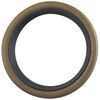

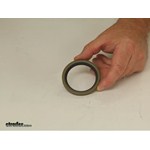




















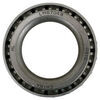

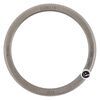



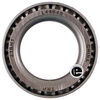
















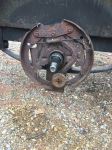



Fencegod
9/2/2015
great!!!!!!